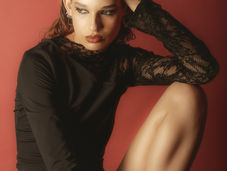'Life Is More Important Than Art' review: Whitechapel’s summer of soulfulness
- Ernest Chlopicki
- Jul 1, 2023
- 4 min read
★★★★☆

Image by Ernest Chlopicki
In a world that is hyper-saturated with images, those that should matter have, in fact, a diminishing effect. Hyper-saturation is perhaps a fitting euphemism to describe the overwhelming fatigue that came as a visceral response to our encounters with COVID-19 lockdowns. TikTok, Instagram livestreams, ‘Coronavirus’ section beaming with urgency at the top of the Guardian’s website – those are but a few signifiers that take us back to the anxiety of March 2020. In this context, Whitechapel Gallery’s new summer programme of exhibitions and events, Life Is More Important Than Art, serves as both a response and a remedy to the callousness that arises when the repetitiveness of ‘bad news’ becomes too much to bear. And in doing so, it earns itself a status of the best new (free!) exhibition that reflects what it means to be young in an age of (more than one) crisis.
In part, the exhibition achieves this effect through its incorporation of interactive installations: to-be-experienced rather than simply to-be-looked-at. Spaces such as Sculpting Conversations and Escape the Slick encourage us to connect with other visitors, be it friends or strangers, as they mediate their communal aspects through objects and an invitation to rest. The former, created by artists and play specialists Sarah Marsh and Stephanie Jefferies, features a collection of tactile toys that are as eerie as they are wonderful. Scattered across the space, these sculptures cumulate in small social hubs: there is a pillow or a bacteria-shaped plaything for everyone. Arguably, Sculpting Conversations functions as an anti-thesis to John Smith’s short film Citadel, displayed just a room away. While Citadel aims at reasoning with the feelings of distance and isolation brought forth by the pandemic (the video features a series of public speeches given by Boris Johnson throughout lockdowns edited onto a window’s view of the world on halt), Sculpting Conversations is an installation that focuses on connection, warmth, relaxation, and ease – all while engaging with the sensorium.

Image by Ernest Chlopicki
Still, if touch-therapy is not your cup of tea, there’s also Escape the Slick, a creative collaboration between Duchamp & Sons (Whitechapel Gallery’s youth collective), London-based artist Gaby Sahhar, and anyone who comes into the space. The room, its walls covered in graffiti-like scribbles that turn it into a physical manifestation of a zoomer’s journal, is conceptually a perpetual work-in-progress. Escape the Slick blurs thus the lines between public and private space as it offers an ideas board, a pile of Marvel comic books intended for communal enjoyment, or a bunch of vintage sofas with in-built speakers that invite us to play a subversive version of musical chairs – one focused on reflection and comfort rather than elimination. Given the free of charge nature of the exhibition at the time of the cost-of-living crisis, Escape the Slick is in many ways a radical proposition, and particularly because it was designed and brought to life by the youth collective itself. Its presence within the gallery makes the absence of such spaces outside the gallery ever so felt – spaces in which our generation can interact both creatively and politically, without the fear of governmental reprimand.
But the collective experience is, of course, not the only fixation of the exhibition. More traditional approaches to art curation are also present, and some will be pleased to hear that they maintain the radical edge of Escape the Slick. Deserving of attention is Janette Parris’s series of graphics called This is Not a Memoir, in which the artist adorns her heart-warming drawings of East and South London locations with detailed descriptions of her personal life experiences: ‘you couldn’t pay me enough to do that job again.’ It is through our interaction with works such as Parris’s that the most successful aspect of Life Is More Important Than Art becomes apparent: the bringing together of the geopolitical, economical, and personal under the hopefulness of James Baldwin’s guiding quote: 'Life is more important than art', and yet 'that's why art is important.’
While there are weaker moments (Osman Yousefzada’s installation An Immigrant’s Room of Her Own is unsure whether it references Woolf’s original essay for either its feminist or literary significance, ending up with neither), the Whitechapel Gallery’s summer programme is setting a new standard for free exhibitions. At the time of my visit, the upstairs Archive gallery, promised to be transformed into The Somali Museum by NUMBI (a Somali-originated African-centred arts and heritage organisation), was not yet open for the public. However, given the vastness I was able to explore, I was left with an impression that Whitechapel’s new curation is the work of living and breathing, allowing for new connections to be articulated upon each visit. As such, it reconsiders the fixedness of museum as a form, enabling it to become collaborative and radical, rather than straightforwardly dictated by the requirements of an art fund.
Life Is More Important Than Art is on at the Whitechapel Gallery from 14 June to 17 September. Free Entry.
Edited by Samuel Blackburn
























Comments